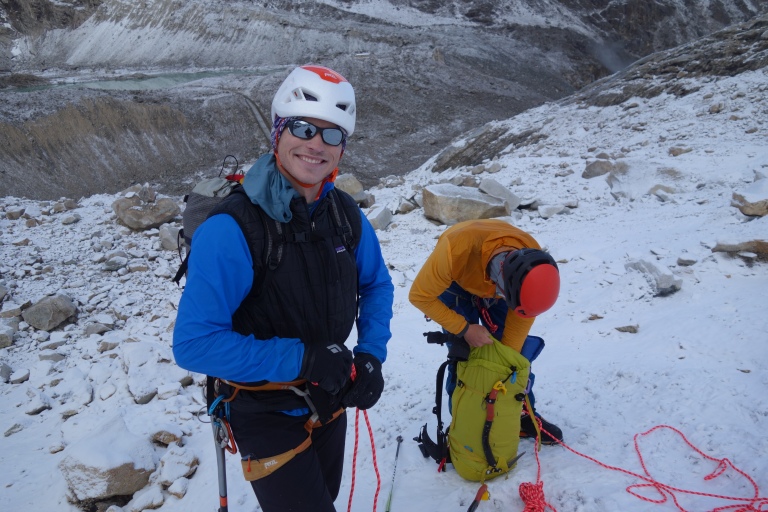For our second climb in Peru, Kyle, Zach and I climbed Ishinca (5530m) on July 7, 2019. I was familiar with the approach given my experience on this peak in 2018, so we moved quickly and confidently in the predawn darkness. Unfortunately, we climbed into the clouds and found ourselves in stormy conditions for most of the day.


The NE Ridge was much icier than I found it in 2018. The climbing is never difficult, but managing crevasse danger and mitigating fall potential was an interesting exercise in teamwork.



After some engaging crevasse navigation, a section of almost completely flat walking, and a 60° snow slope, we pulled onto the summit. I took the lead again on the descent, given that I had lead this same descent in 2018. In a rare moment of cooperation from the mountain gods, the weather perfectly cleared to allow good visibility for our descent through Ishinca-Ranrapalca col and back to Laguna Ishinca.




Gear Notes:
Your lightest glacier kit including a few screws.
Strategy Notes:
It seems that many teams utilize a high camp (4800m) near Laguna Ishinca for this climb. Discussing the strategy with these teams, it seems that the primary goal of camping here is for additional acclimitization. Sleeping high is good for acclimitization, but it seems that for some people, symptoms of altitude sickness start to really increase around 4800m. I would recommend that you climb Ishinca roundtrip from base camp, where you will sleep better and feel better overall. With your extra day (since you’re not using a high camp), you could climb Urus or go for an acclimatization hike to the lake beneath the Tocllaraju icefall.

Nice post, I just got back from the Ishinca Valley last week. Our small team had never been before, and we were self-guided, and by the time we were at the summit (a bit foggy from the altitude, I admit), we could not figure out the safe way to connect to the SW ridge so we just backtracked the NW slopes.
Satisfy my curiosity – what is the best way off the summit cornice onto the SW ridge?
LikeLike